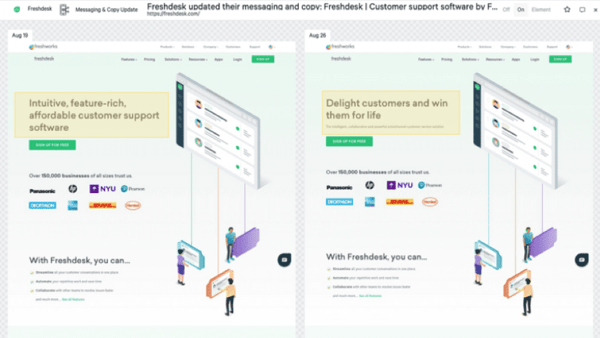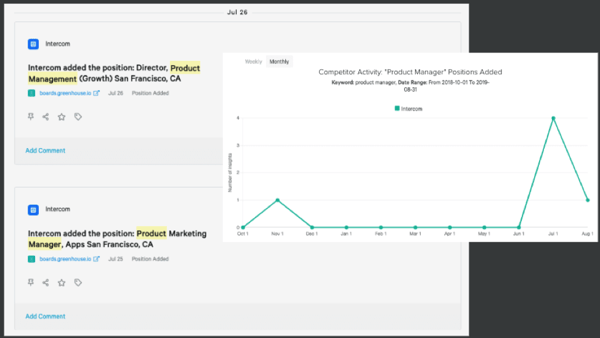Becoming a market expert is a big undertaking. Markets are large, complex, and constantly changing. But if you’re tasked with tackling a market analysis, here are the steps you can take to get an overview of the market landscape and arm your teams with actionable market insights.
What is a Market Analysis?
A market analysis investigates the dynamics of a specific market within an industry. This includes looking at the customers, solution providers, and other key players; and analyzing all of their needs, solutions, and contributions to the market. A market analysis may include both quantitative and qualitative evaluations, such as market sizing, customer segmentation, or even political and economic forces that affect the market. Ultimately, a market analysis is meant to be a tool for a business to make sound decisions around investing in or playing in that market.
NEED COMPETITIVE INTELLIGENCE BEST PRACTICES? USE OUR FREE TOOL >>
5 Step Market Analysis Playbook
Here are five steps you can take to get a foundational analysis of a market.
1. Define
The first step is to identify all of the key players in your target market. This includes:
- Customers: Paying customers who use your solution or a competitor’s, as well as users (paid, trial, or free) of any of those solutions.
- Competitors: Companies with whom you compete for sales. Be sure to include direct competitors as well as tier 2, 3, etc. as well as indirect or tangential competitors.
- Influencers: Partners, thought leaders, or even indirect or aspirational competitors who also have an impact on your market and your customers.
2. Analyze
Analyze the activities of competitors, customers, etc. to identify commonalities & key characteristics.
- Customer needs: You can learn about customer needs by, of course, talking with potential customers. You can also get great insights via online reviews, social media feedback, and other public outlets.
- Product solutions: It’s important to get a deep understanding of existing solutions in the market, how customer needs are addressed today, and where there are gaps. Competitor websites are a good starting point for this information, but if you can get your hands on the competitors’ products directly, that’s even better.
- Marketing strategies: In addition to understanding the solutions in the market, it’s also important to evaluate go-to-market strategies of those solution providers. Analyze their content marketing, their campaigns, their events, and so on.
- Customers and use cases: Analyzing customers in the market allows you to identify relevant customer segments. Part of this analysis should include an evaluation of use cases and how each existing solution supports different customer needs.
3. Trend
Part of your analysis should include not just where the market stands today but also where things are going. There are many online signals that can help you identify directional shifts in the market. For example:
- Website changes, such as messaging changes, product changes, or changes to competitor pricing/packaging, can signal broader shifts in a company’s strategy. In this example from Freshdesk, we see a single headline change shows a shift from focusing on features and price to focusing on customer retention. A few words on a single page illustrates a broader strategic shift.

- Hiring trends - at a high level or even down to the details of a job description - can also reveal where key market players are investing ahead of the results of a particular product or go-to-market effort. For example, this spike in product management job openings at Intercom show an increased investment in product development. And when we drill down to the details, we can see the specific areas of the product that are receiving that investment.

4. Share
A market analysis is only as effective as its influence on business decisions, and to make that possible, those market insights need to be shared with business stakeholders. There are four key audiences for a market analysis:
- Product: Product management or the relevant team building and delivering solutions to market. They need market analysis in order to inform product direction.
- Sales: Sales teams need market insights in order to best address customer needs and bring on successful customers.
- Marketing: Marketing teams need market insights in order to make sound go-to-market decisions, including campaigns, positioning, and more.
- Executives: Executive leadership will use market analysis findings to inform overall company strategies and investments.
5. Measure
How do you know if you created an effective market analysis? The final step in this process is to analyze your effectiveness in terms of arming the company with actionable market insights. There are a few different types of metrics you can use to analyze your results:
- Business results: At the end of the day, your market analysis should impact the company’s bottom line. Potential metrics include revenue, marketing campaign or product launch metrics, and sales conversion rates.
- Deliverables: Your market analysis - initially and ongoing - should result in deliverables to each of those stakeholders. Measures on deliverables include number of insights delivered and the timeliness of those insights.
- Engagement: Just because you deliver it, doesn’t mean those stakeholders will engage with it. Metrics around engagement of your deliverables provide feedback on their usefulness. Metrics include usage/views/comments on deliverables, inbound inquiries for more market insights, and actions taken as a result of those insights.
- Qualitative feedback: Round out your metrics with qualitative measures sourced through survey or ad hoc feedback. Ask stakeholders how useful each analysis has been, what they’ve found most valuable, and why.
A market analysis can be an incredibly useful tool for understanding the market landscape, with the ultimate goal of driving educated business decisions. Follow these steps not only to get an initial understanding of the market but also to stay on top of changes and to enable your entire organization with market insights on an ongoing basis.




